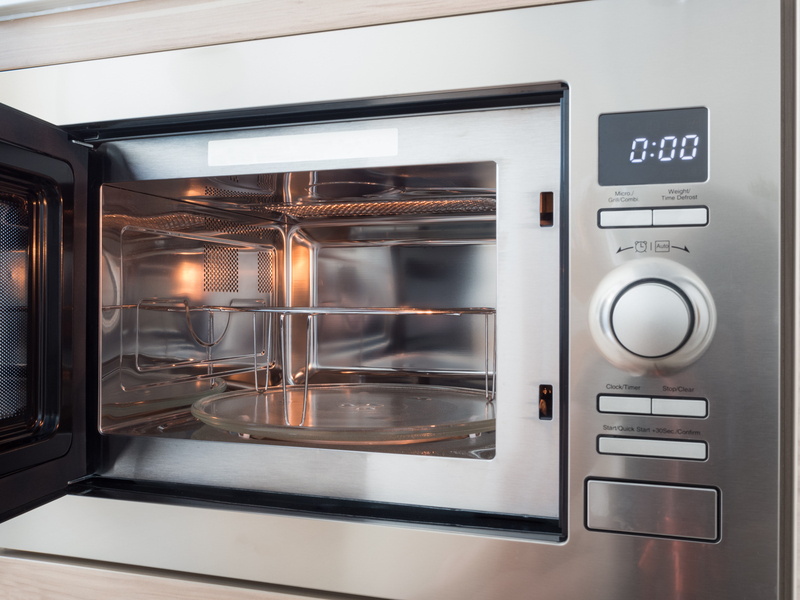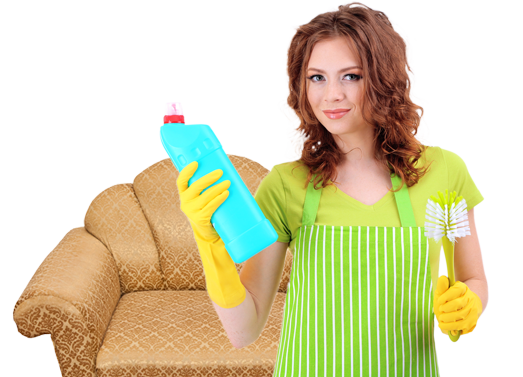Mastering the Art of Washing Velvet Curtains with Care
Posted on 13/09/2025
Mastering the Art of Washing Velvet Curtains with Care: The Complete Guide
Velvet curtains add an unrivaled touch of luxury, texture, and sophistication to any living space. Their plush appearance and dramatic drape make them a favorite for homeowners and designers alike. However, knowing how to wash velvet curtains with care is crucial; one misstep can ruin their beauty forever. In this detailed article, we'll walk you through everything you need to know to safely clean your velvet drapes and keep them looking splendid for years to come.

Understanding Velvet: Why Special Care is Essential
Velvet isn't just a fabric--it's a textile technique that can involve cotton, silk, or synthetic fibers. Its signature pile, which gives it that luxurious sheen and soft hand, is delicate and easily crushed. This means washing velvet drapes isn't as simple as throwing them in the machine. Careful handling is essential to preserve their beauty, texture, and depth of color.
How Velvet is Made
- Material Types: Velvet can be cotton, silk, polyester, rayon, or a blend.
- Weaving Process: Velvet is woven on a special loom that weaves two thicknesses at the same time, which are then cut apart to create the pile.
- Sensitive Pile: The upright fibers (or "pile") are what make velvet soft, but also prone to flattening, crushing, or matting during improper washing.
Understanding the composition and structure of your velvet curtains is the first step in developing a washing routine that maintains their original elegance.
Should You Wash Velvet Curtains at Home?
Many people ask: "Can I wash velvet curtains myself?" The answer depends on the type of velvet, its backing, and any manufacturer instructions. Most modern synthetic or cotton velvets can be spot cleaned or gently hand-washed, but antique, silk, or unmarked velvets should almost always be dry-cleaned by professionals to avoid irreparable damage.
What the Labels Say
- Check for Cleaning Codes: Look for any care labels attached to your curtains. "S" stands for dry clean only, while "W" means it is safe to wash with water.
- Test a Small Area: If you can't find a label, carefully test your cleaning method on a hidden area to monitor for colorfastness and texture changes.
In summary: When in doubt, dry cleaning is the safest solution. However, if you're confident your curtains can be hand-washed, read on for our comprehensive guide to washing velvet drapes with care.
Step-by-Step: How to Wash Velvet Curtains with Care
Let's explore the process of mastering velvet curtain washing at home--from pre-treatment to drying and rehanging.
1. Gather the Right Supplies
- Mild, non-alkaline detergent (specifically designed for delicate fabrics)
- Washbasin or bathtub (for hand washing)
- Soft, clean towels
- Gentle vacuum (optional, for dust removal)
- Lukewarm water (never hot)
2. Preparation
- Remove Hardware: Take down your velvet curtains and remove all hooks, rings, or other hardware.
- Shake Out Loose Dust: Take the curtains outside and give them a gentle shake to remove loose debris.
- Vacuum: Use a vacuum cleaner with a soft brush attachment to remove deeper dust. Always vacuum in the direction of the pile.
3. Spot Cleaning Stains
If you have localized stains, follow these steps before washing the entire curtain:
- Use a damp, clean cloth and a few drops of mild detergent.
- Gently blot (do not rub) the stain, working from the outside in.
- Blot with a dry section of cloth to lift moisture.
- Let the area air dry, using a hairdryer on cool if necessary to speed the process.
4. Hand Washing Velvet Curtains: The Safe Way
Hand washing is the preferred method for cleaning washable velvet curtains:
- Fill a Bath or Basin: Use lukewarm water and a small amount of mild detergent.
- Submerge and Swirl: Gently agitate the water with your hand to mix the detergent, then immerse your curtains. Use slow, gentle motions to ensure the detergent reaches every part.
- Soak and Gently Wash: Let the curtains soak for 10-15 minutes. Swish them very gently; avoid scrunching or wringing as this can crush the pile.
- Rinse Thoroughly: Drain the soapy water and refill with clean water. Repeat rinsing until all soap is out (several changes may be necessary).
5. Removing Excess Water
- Never twist or wring velvet! Instead, spread a large, absorbent towel on a flat surface.
- Lay the wet curtain flat on the towel and roll up gently to press out excess water.
- Repeat with a second dry towel as needed.
6. Drying Velvet Curtains Carefully
- Air dry flat: The best way to dry velvet is to lay it flat on a clean towel in a shaded area. Never hang wet velvet, as the weight can distort the shape and stretch the fabric.
- Avoid Direct Sun: Sunlight can fade rich velvet colors and cause streaks or spots.
- Do not tumble dry, as heat and tumbling action will damage the pile.
7. Steaming and Restoring the Pile
Once your velvet curtains are dry, you may notice their nap (the soft raised surface) looks a little flat. Here's how to restore the plush finish:
- Steamer Method: Use a handheld steamer, holding it a few inches away and steaming in the direction of the pile. Gently lift the pile with your hand or a soft brush as you go.
- Ironing: Only use an iron on the lowest setting and always from the reverse side, with a pressing cloth in between. Direct contact with heat can crush velvet permanently.
Pro Tips for Maintaining Velvet Curtains Between Washes
- Regular Dusting: Keep velvet looking fresh by using a gentle vacuum or lint roller weekly.
- Spot Clean Immediately: Address spills and stains as soon as possible to prevent setting.
- Avoid Moisture: Keep windows well-ventilated during rainy seasons to prevent mold and mildew on thick velvet drapes.
- Fluff the Pile: Periodically refresh the nap with a fabric brush or by gentling steaming.
- Professional Cleaning: Every 1-2 years, consider hiring professionals for a deep, safe clean--especially for vintage or silk velvet curtains.
Common Velvet Curtain Cleaning Mistakes to Avoid
Even the most diligent homemakers can make mistakes when it comes to cleaning velvet drapes. Avoid these common pitfalls:
- Washing Without Testing: Always test a small, hidden area for color run or shrinkage before washing the entire panel.
- Using Harsh Chemicals: Bleach, strong detergents, and fabric softeners can damage the pile and strip color.
- Over-agitation: Rough handling--the kind that happens in a washing machine--will crush the delicate fibers.
- Improper Drying: Hanging heavy, wet velvet or using a dryer can cause stretching, distortion, or a permanently flattened nap.
- Ignoring Manufacturer's Care Instructions: Always follow the care label if it's available--to the letter!
When to Choose Professional Cleaning
While many synthetic and sturdy cotton velvets tolerate gentle home washing, there are times when it's best to leave things to the experts:
- Antique or heirloom velvet curtains
- Silk velvet or unmarked fabrics
- Extensive staining or water damage
- Complex lining or interlinings sewn to the curtain
Professional fabric cleaners have access to industrial equipment, specialty solvents, and years of experience, so your valuables are in safe hands.
Frequently Asked Questions: Washing Velvet Curtains with Care
Can I machine wash velvet curtains?
Generally, machine washing is not recommended for authentic velvet curtains. However, if the care label specifically says "machine washable" and the velvet is synthetic (like polyester), you may be able to use a gentle cycle in cold water, inside out, and in a large mesh laundry bag. Always air dry flat.
How do I remove wrinkles from velvet curtains?
Velvet will naturally shed most wrinkles once hung. For stubborn creases, use a handheld steamer or gently iron on the reverse side over a damp pressing cloth. Never let the iron touch the pile directly.
Why did my velvet curtain lose its shine?
The signature velvet sheen comes from the orientation and condition of the pile. Improper cleaning or drying can crush the fibers, causing dullness. Fluffing with a soft brush or steaming can help restore luster in many cases.
How often should I clean velvet curtains?
Plan to dust and spot clean velvet drapes weekly, with a deep clean every 1-2 years depending on exposure to dust, smoke, and sunlight.

Conclusion: Enjoying Pristine Velvet Curtains for Years
Mastering the art of washing velvet curtains with care is a great way to protect your investment and keep your living spaces looking their best. With patience, gentle handling, the right products, and an understanding of the velvet fabric itself, you can ensure your curtains retain their stunning softness and beauty year after year. If in doubt, don't hesitate to consult professionals or reach out to your curtain's manufacturer for guidance.
Summary of Key Points for Washing Velvet Curtains with Care:
- Always check care labels and, when in doubt, opt for professional dry cleaning, especially with silk or unmarked velvet curtains.
- Hand wash using mild detergent, avoid twisting or wringing, and rinse thoroughly.
- Dry flat, away from sunlight, and gently steam to restore the nap if needed.
- Maintain velvet between washes by regular dusting and spot cleaning.
If you treat your velvet curtains with the care and respect this luxurious fabric deserves, you'll enjoy their warm allure and rich texture for seasons to come.





